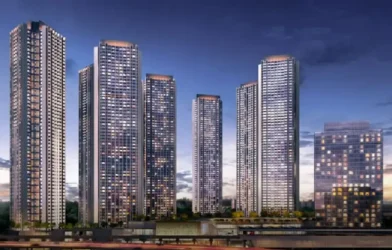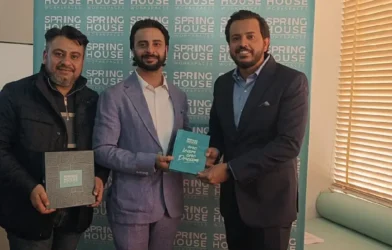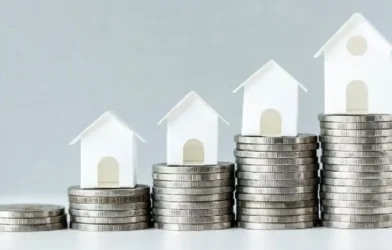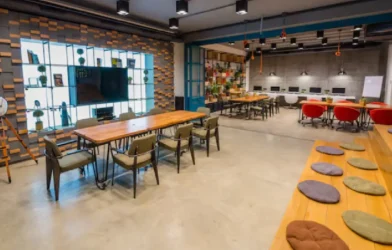Subtotal ₹0.00
V Suresh, is a veteran real estate professional with a vast knowledge and experience. Former Chairman and Managing Director of HUDCO, past president NAREDCO and vice chairman, National Building Code of India, he is an authority on sustainable developments. He has been associated with Indian Green Building Council (IGBC) since 2001. He served as the Chairman of Policy and Advocacy of IGBC and Chairman IGBC from October 2018 till Jan 28,2022. In this exclusive interview with Torbit Realty, Suresh talks about IGBC’s contribution in promoting green building environment, emerging trends in sustainable developments, need for responsible design and construction for green spaces the roadmap ahead for sustainability. Excerpts
Q IGBC has launched over two dozen different green rating programmes to promote sustainable built environment. What has been the response to it and what is the progress so far on the green buildings front?
The response to our different rating programmes has been heartening as it is encouraging project teams to take up projects under the respective rating programmes with a lot of clarity. Green building movement today is a pan – India movement and has become a ‘people movement’ with over 7,120 projects with green footprint of over 8.003 billion sq.ft. India is the only country where airports, railway stations and so many metro authorities have adopted IGBC’s green rating programmes for Transit and showcased the commitment towards sustainable development. IGBC Green High Speed Rail rating has been the fourth important milestone in taking forward the ‘Green Transit Movement’ in India.
As many as 27 green villages, 20 green cities and 50+ green townships have adopted IGBC’s benchmarking tools for built environment. While all asset classes of buildings are covered, residential buildings with 3 ratings top 18.5 lakh residences with over 2.2 billion sq.ft. of green footprint. In order to encourage construction industry, many states are now providing incentives for IGBC green building rated projects. Financial Institutions have also extended incentives to green rated projects. There are now 30 green building rating systems for all asset classes of buildings, transit and built environment. Even IGBC Net Zero Rating Systems have been launched with energy savings of 103 billion units per annum, energy savings of 103 billion units per annum and water savings of 318 billion litres per annum.
Q Cities are major energy and resource guzzlers. What can be and should be done to carry forward the concept of green buildings to green cities?
Rapid growth in urbanization has placed immense pressure on existing land and other natural resources. In this context, planning principles must be reframed, to be able to respond effectively to the big challenges imposed by growing urbanization, through an approach that embraces sustainable urban development principles into city planning framework. IGBC has diversified from building to built-environment and brought in the ratings for large development – townships, cities and villages. At a macro level, one of the solutions is by introducing the concept of ‘Green Cities’. Under this concept, cities are encouraged to convert environmental problems into opportunities and appropriate solutions. The Green City concept seeks to promote an eco-friendly city that balances social, economic, and environmental dimensions, as well as good urban governance as its foundation. Also, one of the main concerns which needs to be stressed upon is optimal and efficient use of natural resources like water, energy and land-based building. Urban planners, urban designers, and architects must work in close collaboration with local administration and communities to ensure that integrated planning and design thinking is undertaken to conceive a city based on sustainable / green planning principles. In this context, Greenfield cities and Smart & AMRUT cities undergoing a transformation phase have the opportunity to set a strong eco-vision that can be transformed into a long-term plan achieving the objectives of sustainability, resilience and efficiency with a layer of digitalization (ICT) to make the cities perform in a smart way.
IGBC had brought out the IGBC Green Cities Rating, a guiding document for greenfield cities (new cities) in 2015 followed by the second version of IGBC Green Cities for Existing Cities in 2017 and an exclusive Green Rating for Hill-centric Development in 2018. IGBC is working closely with development authorities and developers to apply green concepts and planning principles in several Indian cities, resulting in reduced environmental impacts that are measurable and improving the overall quality of life.
Q How do you see the increasing role of architects in promoting a green built environment when there is an increasing need to integrate design and environment?
Architects’ role is basically that of preserving, improving and creating quality-built environment under definite conditions. To strengthen architects’ action for sustainable environment development, continual encouragement and development at personal and collaborative level is required. Sustainable development should be integrated in architects training and they must update themselves regularly with contemporary trends in the design and construction of built environment, besides interrelating themselves with other multi-disciplinary professionals. Sustainability is a key element of the architecture profession’s approach to design in the 21st century as it tackles the compounding global challenges of resource availability, water quality and increasing pollution.
IGBC has entered into MoU with IIA and COA for collaborative promotion of green building concepts among the architecture fraternity of over 1.3 lakh architects. IGBC is working closely with Council of Architecture and All India Council for Technical Education (AICTE) for giving thrust to green education, and training the architecture & engineering students on green building and energy conservation concepts, green building construction materials and green rating systems. IGBC has institutionalized an annual national level Architectural Design Competition for students of architecture colleges across India. IGBC Accredited Professional (IGBC AP) exam encourages architects to become a qualified green building professional and IGBC AP Associate exam is designed exclusively for student community.
Q How do you look at the growing importance of green building materials in promoting sustainable development?
The design of green buildings should begin with the selection and use of eco-friendly materials with related or better features than traditional building materials. Building materials are usually selected through functional, technical and financial requirements. However, with sustainability as a crucial issue in the last decades, the building sector, directly or indirectly causing a considerable portion of the annual environmental deterioration, can take up the obligation to contribute to sustainable development by finding more environmentally benign methods of construction and building. These could be found in new material applications, recycling and reuse, sustainable production of products or use of green resources, Careful selection of eco-friendly sustainable building materials / eco-labelled products such as GreenPro certified products may be the fastest way for builders to start integrating sustainable design concepts in buildings.
GreenPro is an Indian ecolabel, which is an effective tool for selection of green products, materials and technologies for green buildings. A green product assessed under the GreenPro rating standards evaluates the environmental impact of the products in their entire life cycle – manufacturing, use phase and end of life. Ecolabelling is a voluntary method of environmental performance labelling and it identifies environmentally preferable product or service within a particular product or service category. It provides product sustainability information to consumers, thus facilitating green procurement in private and public sector for buildings and infrastructure. More than 1500+ building products from 120+ Indian companies have achieved GreenPro ecolabel. The Greenpro certified products are facilitating availability of low carbon products for construction. The Green ecolabels help the governments to deliver public projects for both horizontal and vertical infrastructure that meet our climate and sustainability goals, by having access to the right methodology, benchmark and verification tools to act at scale. In terms of market potential for green products, materials and technologies, it is estimated that by the year 2025, it will be about USD 300 billion. This offers excellent growth opportunities for the manufacturers of green products, materials and technologies.
Q Post-corona when people are increasingly seeing the benefits of green and healthy living, what positive impact do you see on the green building ecosystem and how will real estate gain from it?
IGBC is associated with WorldGBC global campaign on ‘Better Places for People’ and the objective of the campaign is to raise awareness of green healthy buildings. In all the IGBC green building rating systems, there exists an overlaying concept of health and wellbeing addressing the good daylight, ventilation, waste management and thermal comfort standards among many other criterion, and as the rating systems are getting updated to the newer versions, we are ensuring greater inclusion of health and wellbeing concepts. There is already plenty of evidence that a green building is healthy for its occupants, more so than a conventional one. And this makes sense too: for example, a green building can use more natural ventilation which improves indoor air quality and a green building can incorporate more daylighting which improves productivity. Health, air quality, equity and biophilia are definitely tackled at building level, but we won’t get to meaningful outcomes if infrastructure doesn’t facilitate net zero transport and provide green and equitable social infrastructure.
Understanding the importance of addressing COVID 19 related aspects in all under construction and existing buildings, IGBC encouraged all key stakeholders including developers, builders, owners, facility managers and occupants of green buildings to incorporate and practice relevant measures to address the spread of COVID 19. A set of exclusive guidelines was released by IGBC in May 2020 with the inputs from the experts and key stakeholders of building construction sector, followed by ‘IGBC’s Green Guidelines for Fast Track and Emergency Facilities for treating COVID-19 patients’
IGBC also brought out version 1.0 for IGBC Green Healthcare Rating, addressing many of the covid related interventions for infection control, necessary air filtration for critical areas.
Q What do you think about the idea of rating developers to promote greener, environmentally conscious and healthier developments?
It is an intrinsically good idea. Many good developers have strong sustainable development policies and commitments and go for green building certification of their projects of all asset classes which reflect in the design, construction, commissioning, operation, maintenance phases. Their projects are well received and have premium value and provide enhanced value to its customers and leased tenants. IGBC has dealt with discerning builders and developers.
CRISIL as part of their rating service, has developed rating methodology for the real estate sector. CRISIL & National Housing Bank have a two-stage rating system. One is developer rating based on track record, timely completion, quality of spaces and products, less consumer complaints, compliance to regulatory ecosystem. The second is project related rating in different locations. The green building components were not factored then. Financial Institutions used to recognize dealing with builders’ track record and project per se. State RERAs can also adopt this framework.
Singapore has an excellent CONQUAS Rating for grading builders in terms of projects executed for structural, non-structural, finishing and services systems, which is very popular among builders. A higher CONQUAS scoring grades a builder better among the peers. The grades used to be around 60 to 65, twenty years back. Good competition has raised the bar and now quality projects and products get scoring of 80 to 85. The sustainable development driven green building features are now included.
Q What are your thoughts on funding needs for green built spaces? How do you see the potential of green bonds becoming a significant part of the funding mechanism for the capital-intensive real estate sector?
It is all the more attractive for banks and HFC to support green building projects wedded to sustainable development principles. There are interest subventions as incentives too.
Green bonds are good for resource mobilisation for financing companies and also large integrated development projects. The tenure should be a bit longer than normal bonds. Government could encourage to give tax sops for Green Bonds.
Green bonds hold vast potential as a financing mechanism, and the importance of green bonds as a funding source for green buildings is projected to increase in the future. Governments can encourage the use of this source of finance to address underinvestment in green buildings by providing information on raising funds through green bonds, endorsing investment in green buildings through codifying green building standards, and promoting local currency bond financing through domestic investors.
Q How do you see green real estate gaining traction in the coming years and what kind of trends do you foresee?
I am very positive and gung-ho about the growth of green real estate. All leading developers are keen to have sustainable real estate projects. IGBC has signed MoU with Confederation of Real Estate Developers’ Associations of India (CREDAI), National Real Estate Development Council (NAREDCO) and Builders Association of India (BAI) to accelerate the green building movement in India. The partnerships are focused on collaborative promotion of green building concepts among the stakeholders and citizens, through networking, capacity building and sharing of information on latest green concepts & technologies with the premier bodies, in turn, facilitating India’s growth as a global leader in green buildings and green built environment.
IGBC is working together with CREDAI and NAREDCO for a smooth and steady transformation. Going green makes sound business sense. Savings on energy, water consumption, waste reduction, besides green cover increase and carbon foot print reduction and enhancing quality of life are all positive and overall lifecycle costing reduction (CAPEx+OPEx) and life enhancement factors. Welcomed by clients, consumers and tenants, it is a win-win for all and for the built environment. All asset classes of buildings and large built environment projects are going for green rating. Many states and urban local bodies are also providing incentives for going green.
Going green has come a long way from being a luxury option to a necessity for the global built environment. For cities around the world, it has a key role to play in helping to cut their long-term carbon footprint. In the early stages of India’s green building movement, green building practices were not perceived to offer any competitive advantage. However, today, we are seeing a shift in mindset with green buildings now regarded as a form of value creation for developers. Adding green building certifications such as IGBC’s green rating to a development’s list of credentials can help boost the developer’s corporate image and the prestige of such developments. It’s not a matter of just developers embracing sustainability, increasingly the green real estate is now driven by tenants. Businesses which strongly advocate corporate social responsibility are increasingly expecting a better indoor environment, lower operating costs and enhanced market value for their spaces. Regulation will have huge impact on the future of green real estate around the world. Following the Paris agreement, sustainability regulations will become even more relevant to global real estate investors. For example, in the European Union, cities will be going beyond just greening buildings, to having net-zero buildings as a regulatory requirement. Jurisdictions will also be created to mandate public disclosure of building energy use data, further intertwining energy use into decision-making on leasing and investment.












